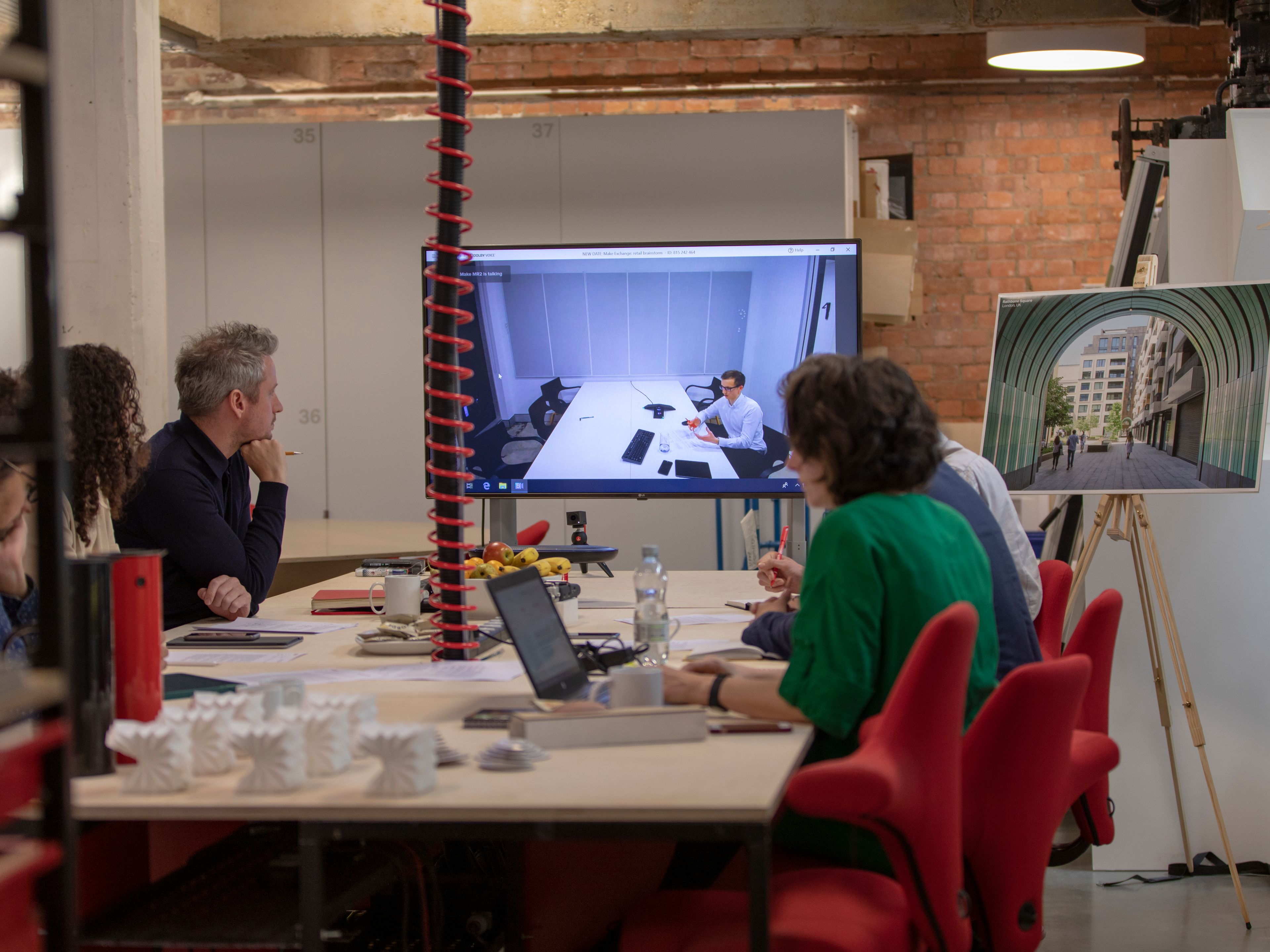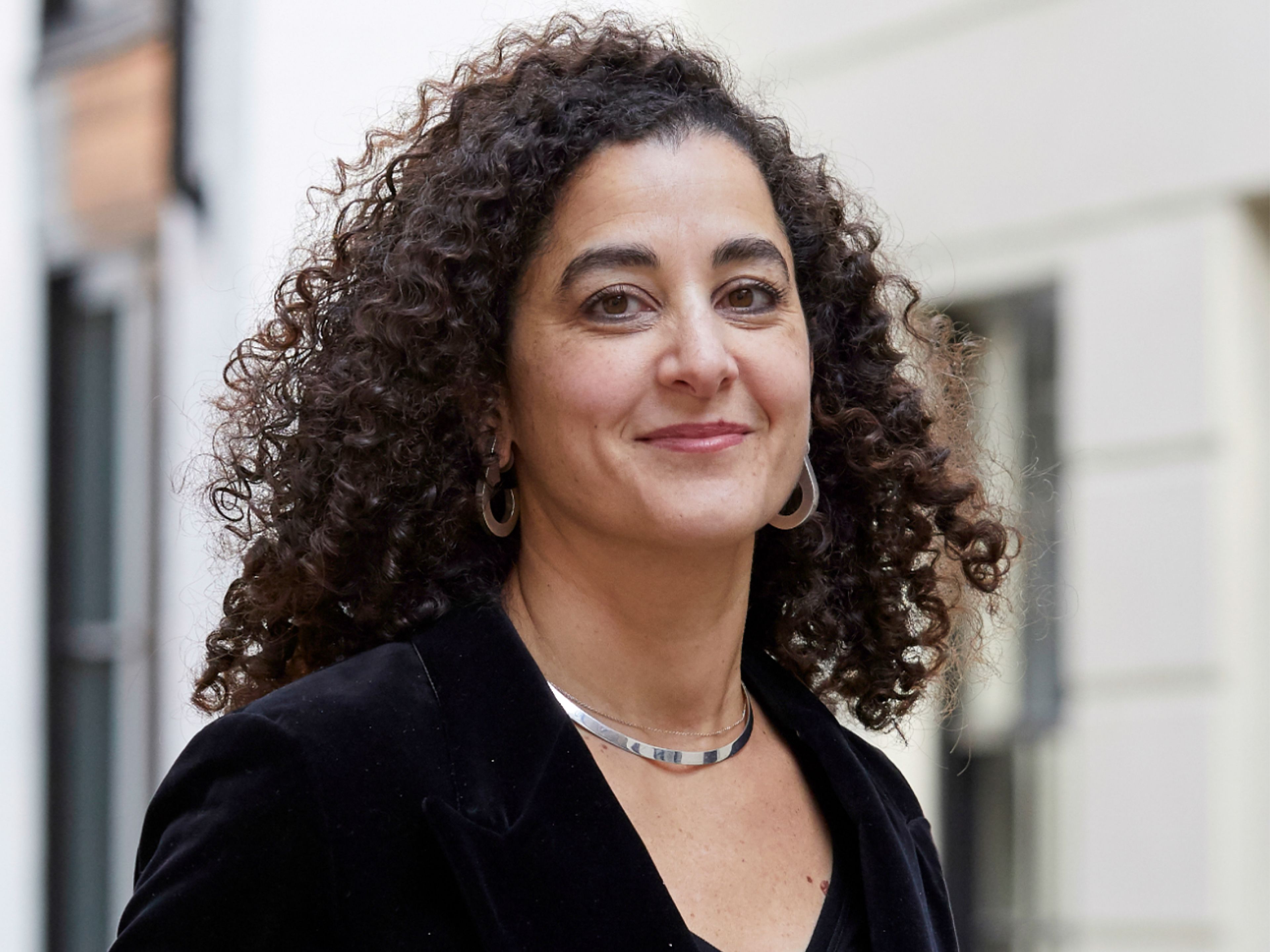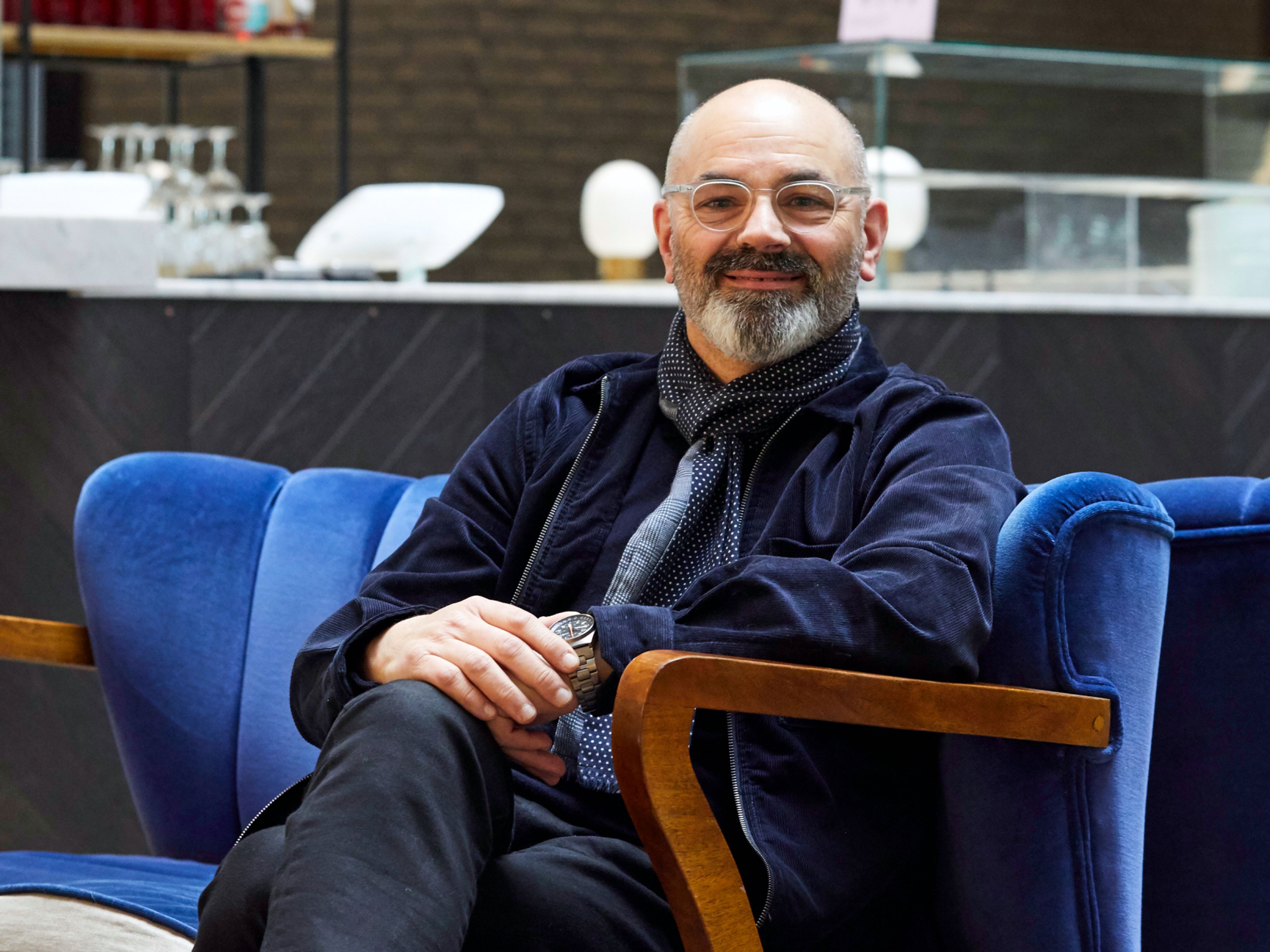Make retail manifesto
At Make we believe retail plays a key role in improving cities and helping communities flourish. Here’s a five-point manifesto explaining our approach to retail design.

ADAPTABILITY
Progressive retailers go beyond generic consumer profiles to target people’s complex needs, whether that’s to be entertained, to learn something or just be able to say “I’ve been there too.” As those needs change, the spaces where they’re fulfilled need to be able to change too.
To make sure a space is flexible and adaptable for the future, we consider a number of factors. How can a space’s occupancy be increased safely? Could it accommodate additional uses, like food production, manufacturing, events or large exhibits? Can we add floors above or below the building in the future?
MIXING USES
People undertake journeys to get to work, to socialise, to access goods and services. The more of those journeys a retail place can capture, the more time visitors will spend there and the more there will be to experience. This is part of the ‘and then’ concept, which relies on the successful combination of multiple uses in one place.
We always consider overlaying traditional retail with leisure, workplace, residential, hospitality and transport uses. We aim to design places that bring lots of people on their different journeys together, creating opportunities for exciting and multifaceted experiences.

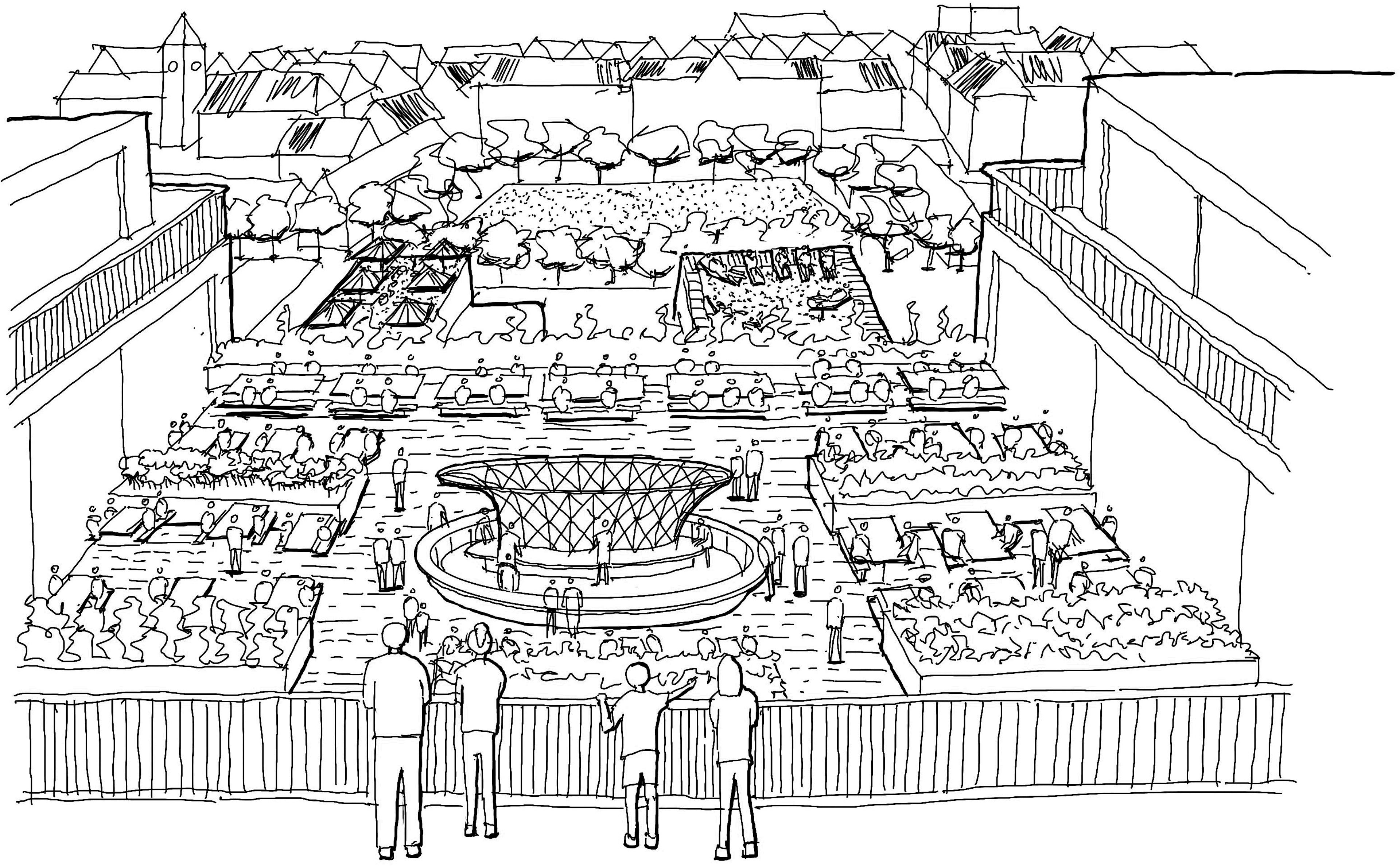
PLACES
Retail destinations should enhance the civic identity of the places they’re part of. Crucially, they should weave in local historical and cultural narratives, offering experiences, events and products relevant to the community.
We ensure our retail schemes relate to their social and economic context by connecting them with surrounding environments via considered routes, scales and materiality. The aim is to bring together existing communities while also creating new ones in diverse and exciting ways.
VALUE
In sparsely populated contexts, the role of retail is to provide access to particular goods and services that aren’t widely available. In denser areas, retail is often used for its halo effect of creating highly desirable places and bringing people together. In both cases, it increases the value and profile of surrounding homes and workplaces.
When designing a retail project, we set out a clear idea of the value we expect it to bring to a place. Even when it’s not financially viable by itself, retail can play a crucial role in putting new places on the map or regenerating existing ones.
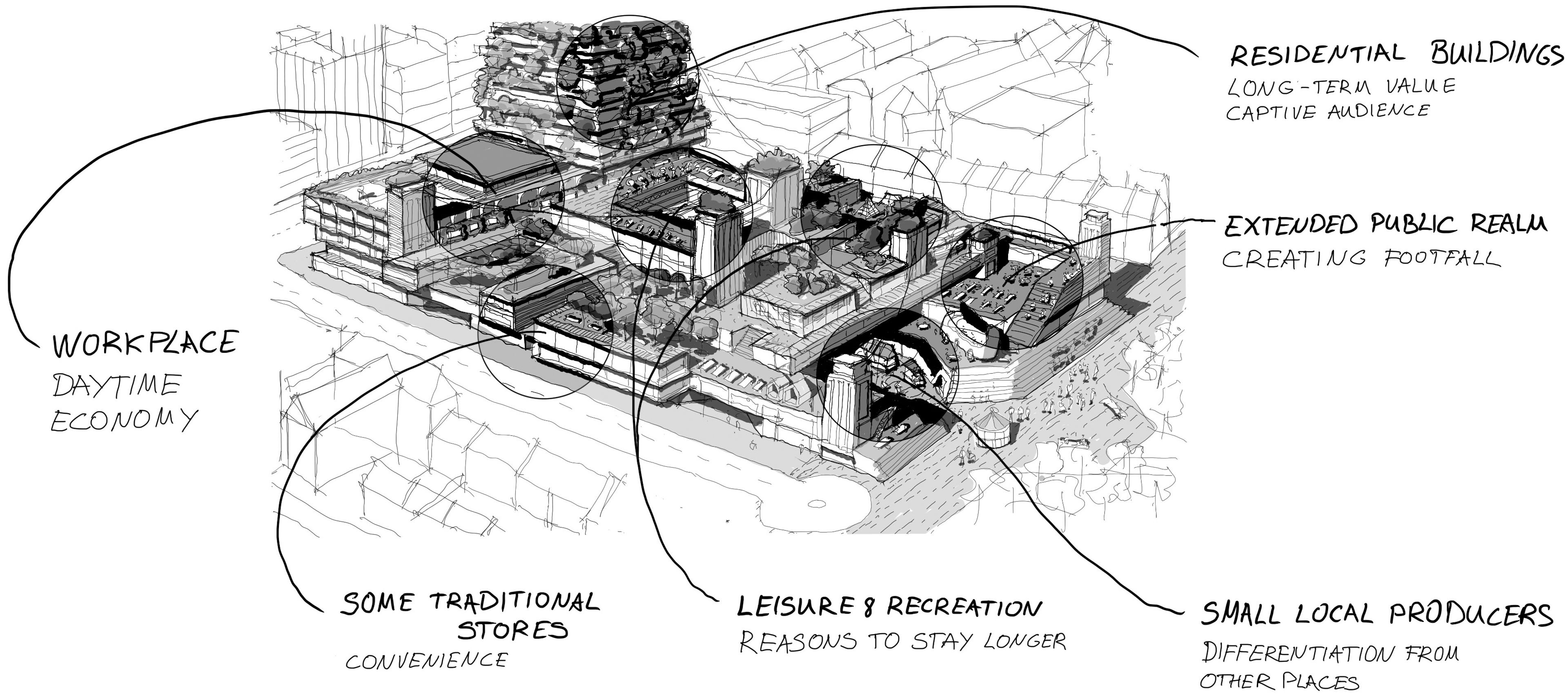
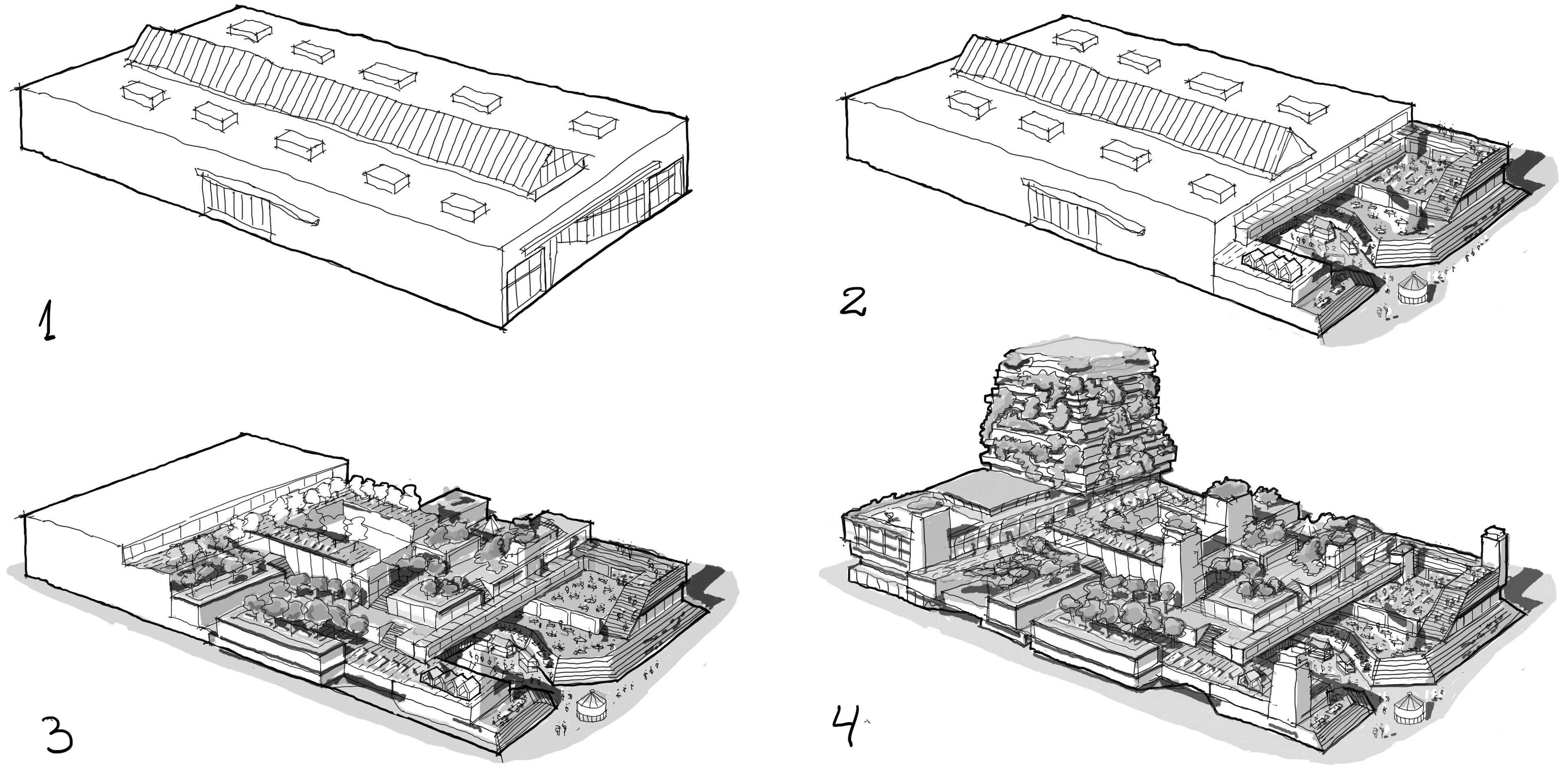
EVOLUTION, NOT REVOLUTION
Committing large amounts of investment to revolutionise retail property in a single push is an unlikely scenario. Existing assets don’t need to be torn down and completely rebuilt overnight; it’s far more effective to stimulate the development of a given place in a desired direction with gradual interventions and innovations, following the aforementioned principles.
We believe that considered evolution is the best way for retail to grow and develop sustainably in the 21st century. We think carefully about each retail scheme we undertake to ensure its continuous development over a long period of time.
Publication
This article appeared in Exchange Issue No. 2, which explores the changing nature of the retail sector with contributions and design analysis from leading retailers, developers, consultants and more.
Read more